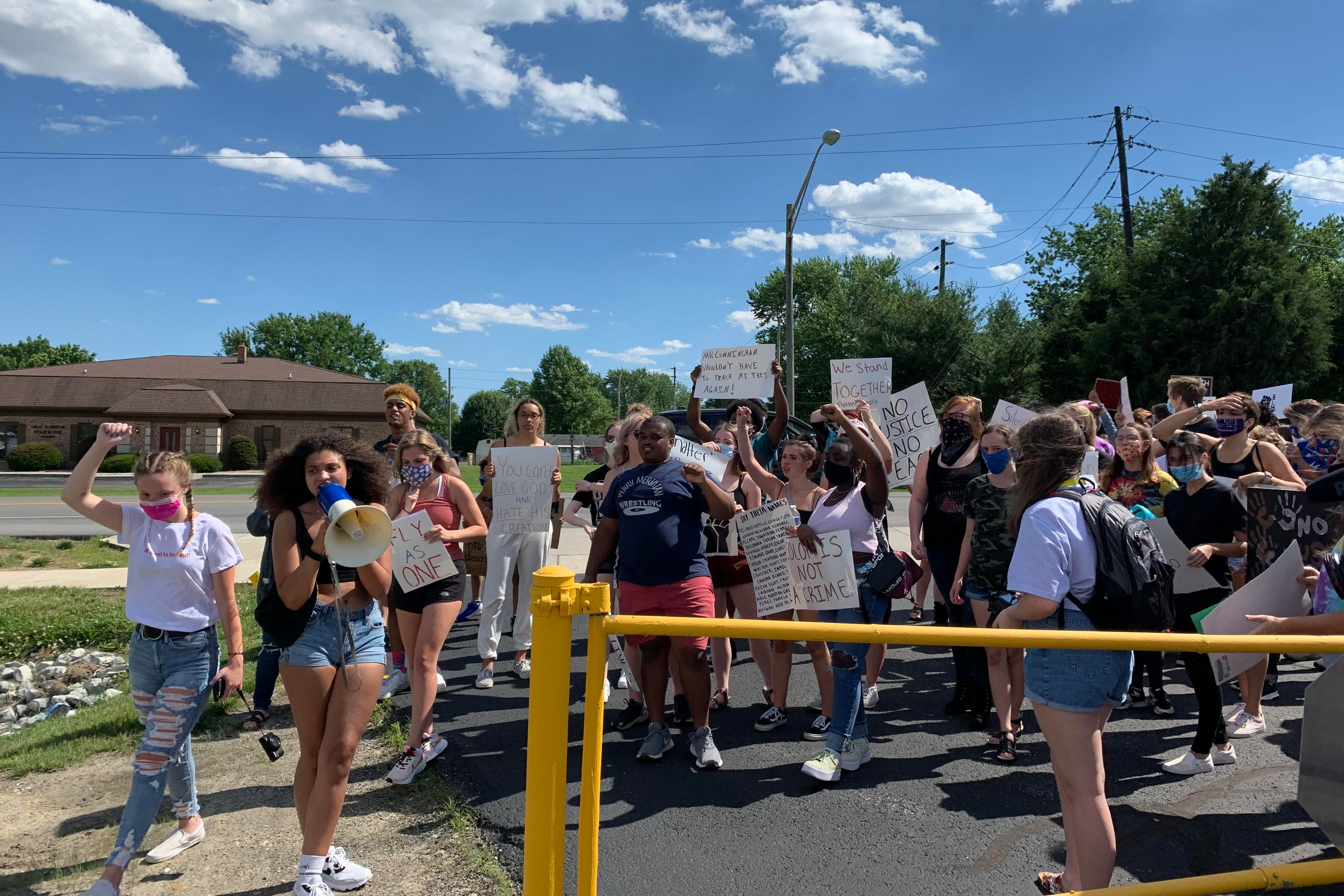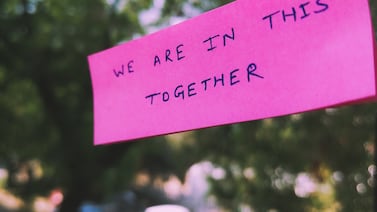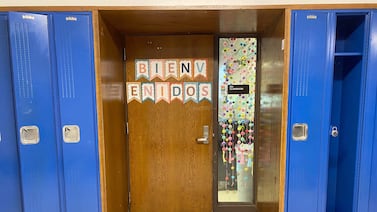About 75 high school students and supporters chanting for racial justice demonstrated at a Perry Township middle school and accused classmates and teachers of racist behavior.
As conversations on racism and police brutality once again sweep the nation, some Indianapolis high school students decided they needed to confront racism that they believe has permeated their classrooms.
“It’s my responsibility, along with everyone, to call them out,” said Megan Hurst, an 18-year-old Perry Meridian High School graduate and one of three students who organized the Thursday rally.
The students want their administration to hold teachers accountable for racist comments, implement diversity training for teachers, and address racial justice in curriculum. They want their peers to denounce racist incidents rather than stay silent or laugh for fear of fitting in.
The organizers circulated a flyer citing examples of racism they and others had witnessed at school. These included teachers calling students slurs and mocking immigrant students. The flyer connected two teachers to the allegations.
The teachers did not immediately respond to a request for comment. Remote classes finished the week of May 18.
In a statement, Perry Township spokesperson Keesha Hughes said the district condemns offensive behaviors and has launched an investigation into the accusations raised on social media against specific teachers.
“Perry Township Schools is committed to building an anti-racist community where everyone feels safe, included, and valued,” the statement read.
Students spoke with pride about the diversity of their student body, among the more diverse districts in Indiana. More than 40% of students in Perry Township schools are white. About 30% are Asian, many of them Burmese refugees. About 15% of students are Hispanic and 8% are Black.
At the protest the students looped around the parking lot to Perry Meridian Middle School and back to the adjacent 6th Grade Academy, chanting “Say his name” and holding their signs. Then they regrouped, and students spoke about racism they’ve experienced or witnessed at school.
Displaying a mix of maturity and childhood, students talked about their complicity in injustices that they’ve seen happening in front of them.
They drank Capri Suns and munched on Welch’s fruit snacks. They spoke about making the future different for their own children as teachers watched near the back.
Standing in the parking lot as the crowd lined up to protest along the edge of the street, Jenny and Patrick Meredith, parents of an 11th grade protester, debated whether to join.
They decided that they didn’t want to intrude on the student-organized event.
“I think it is part of growing up,” Jenny Meredith said.
Perry High School junior Ruth Gakunga, who is Black, said she’s never experienced racism at school but earlier this year saw students accuse Asian and Hispanic students of spreading the coronavirus. She felt responsible for speaking up, conscious that similar racist ideas could affect her one day.
“I am part of this community, and I can’t be in a community without sharing my voice,” she said.
Students said they recognized that progress requires reforming the education system. They pointed out that almost all significant figures they study in history classes are white.
Some Perry Township teachers said that the curriculum leaves little space for conversations about current events and racial injustice.
English teacher Jacob Fritz, who is white, includes a unit on race and inequality in his sophomore class.
AP history teacher David Luers, who also is white, said he talks about politics and social issues in his classes and encourages students to look for connections between what they’re learning and what’s happening in the world.
“They have a lot to say, it just comes to giving them the space to say it,” he said.
Perry Township is reviewing curriculum to “confirm that materials represent diverse perspectives and that teachers are using culturally responsive techniques,” according to a district statement. “We will introduce anti-racist resources to empower students to stand up to racist conduct. Once district leaders have identified appropriate strategies, we will bring a thorough plan to our students, families, and staff.”
Ellie Brown, an incoming Southport junior who was one of the protest organizers, said she felt it was important for “us white people to hear those stories and understand better.” As class president, she realizes she has a platform to amplify others’ voices. She wore a white T-shirt that read “It’s cool to be kind.”
Co-organizer Hurst, speaking to the crowd, urged white people to remember, “We are not here for ourselves, and we are not here to put on a show for ourselves.”
Then she added, screaming: “For god’s sakes, white people, if your friend says the N-word, who is white, call them out!”
Kiara Moore, who graduated from Southport a few weeks ago and helped organize the protest, suggested students take history and government classes so they could “take this to the polls.”
“Educate yourself, ’cause knowledge is power,” she said.
At the rally’s end, Moore led the group through eight minutes of kneeling in silence in memory of George Floyd, the Black man killed by a white Minneapolis police officer. She urged the teenagers to forgo social media and reflect instead.
A timer rang, signaling people could stand. The Black Eyed Peas’ “Where is the Love” blasted through speakers. People started milling about like a school day had just finished.
Moore said she was proud of how the protest turned out. More people showed up than she had expected, including a handful of teachers.
“They always tell us we’re the future,” she said.








